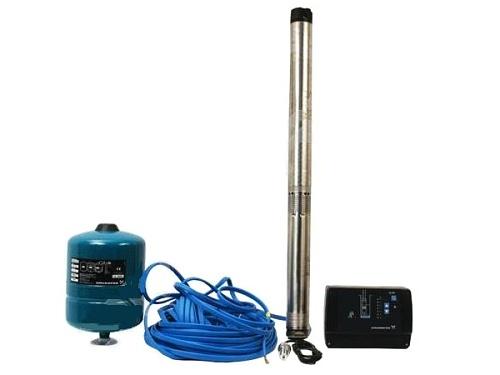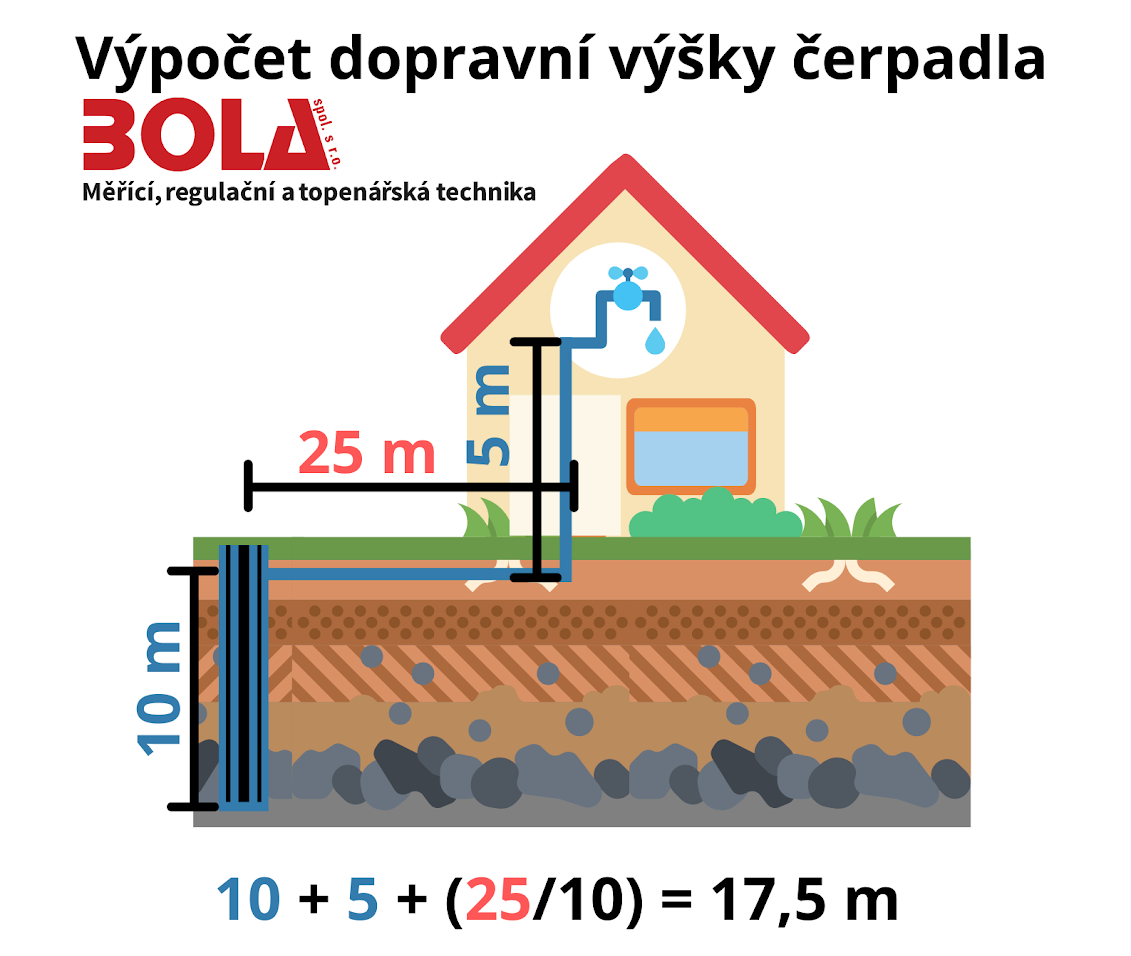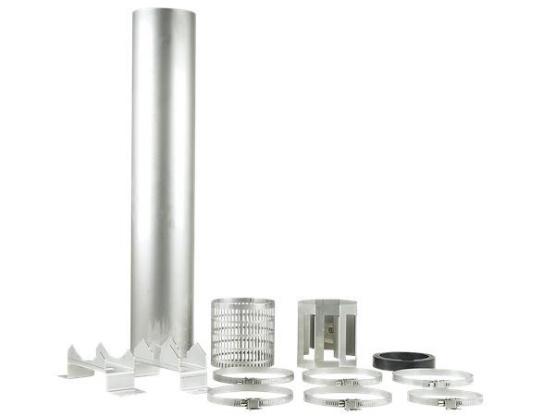Submersible pumps are used for pumping groundwater from wells and deep boreholes, where clean water is found that usually requires no treatment. While classic self-priming pumps and home waterworks can only work up to a depth of 8 meters, beyond which their use is not physically possible due to the suction principle, submersible well pumps are capable of pumping drinking and utility water from depths of up to 150 meters. They are submerged in the water, which they then suck in and push out to the water supply pipes up to the extraction points. Thanks to quality materials and processing, the well pumps are designed for long-term submersion in both horizontal and vertical positions. They are also suitable for use in narrow spaces, where it is not possible to install submersible pumps for wells. The functionality of submersible pumps for wells with a 100 mm diameter is the same as for pumps with diameters of 74 mm or 130 mm.
A properly selected pump will ensure a constant supply of water from your own source with silent and virtually maintenance-free operation for many years. Its lifespan can additionally be easily extended with proper care. The advantage is also easy installation of the submersible pump into the well.
After building your own water well you are ready to start pumping drinking water from it. However, before you start choosing the best submersible pump for the well, it is necessary to prepare the well so that the pump can function as efficiently as possible.
Submersible water pumps for wells are designed for pumping clean water, therefore it is essential to ensure that there is not an excessive amount of sandy material or other abrasive substances in the well. The acceptable amount of these particles for each submersible pump is specified by the manufacturer and, for example, for high-quality Grundfos well pumps the range is between 50 to 150 g/m3. With a higher concentration of solid substances in the water, there is faster wear of the submersible pump and thus a reduction in its lifespan.
For achieving the highest quality water from your well, we recommend installing a home cold water filter, which protects appliances from sand and dirt sedimentation.
For new or contaminated wells it is necessary to perform their cleaning, which is recommended to be repeated every 4 to 7 years depending on the well conditions.

The presence of gas/air in the water reduces the performance of the well pump and can even cause it to stop completely. An effective protection is the installation of a special casing to increase pressure around the submersible well pump for drinking water.
The yield of the well directly influences the amount of water that can be pumped from the well. For the submersible well pump to function correctly, it is necessary to ensure sufficient water flow around the pump for its cooling. In case of excessive depletion of the well there can be a situation of dry running of the submersible pump, which can irreversibly damage the pump. Grundfos SQ and SQE submersible well pumps have built-in dry run protection and can stop pumping in time if there is a lack of water in the well. Too frequent switching on and off of the pump reduces its lifespan, so it is good to avoid this problem already during the well preparation.
If the submersible water pump for the well is located in dug wells and tanks where there is insufficient depth, it is essential for its trouble-free operation to ensure cooling by the flow of surrounding water. The same effect can be achieved by installing a cooling jacket.
Recommendations from family and friends are always the best advertisement, but wells can vary. Therefore, it is important to choose a submersible pump that matches the conditions of your well. Choosing the wrong submersible pump will cost you higher operating costs and a shorter lifespan of the pump. In the worst case, it can even lead to the ruin of the entire well. The same applies to incorrect installation of the submersible pump in the well.
How to choose a submersible pump for a drinking water well?
The diameter of the submersible pump must be smaller than the diameter of the well itself. There should be a minimum 10 mm gap, between the pump casing and the well wall to ensure sufficient water circulation and exchange for cooling the pump and also to provide protection against mechanical damage to the submersible pump.
There is a range of submersible pumps for narrow wells and we also offer submersible pumps with a small diameter (starting from a diameter of 74 mm).
Another important parameter that you need to know for choosing a submersible pump for a well is the expected amount of water you want to pump, known as the flow rate. Ideally, its value should be around 3 m3/h. The flow of the correctly chosen pump should be as close as possible to the point of best (peak) efficiency, while at maximum flow the pump should operate minimally.
If the flow rate requirement falls between two models, choose the one that better suits the other parameters.
The delivery height indicates the distance to which the submersible pump must deliver water. This value determines the pressure needed for the desired amount of water to reach the highest consumption point. Therefore, when choosing a submersible pump for a well, it follows that the greater the distance, the greater the pressure the pump must generate.
The delivery height is simply calculated as the sum of the vertical and horizontal distances from the water source (pump) to the consumption points. Horizontal meters are divided by a coefficient of 10 (as less force is needed to transport the same amount of water than in the case of vertical meters).

An example of calculating the pump's delivery height is illustrated in the image.

The submersible pump for a well must be chosen with regard to the depth at which it will be installed. When placed at a greater submersion depth, the water column exerts higher pressure on the submersible pump, which then affects the seal of the pump. If the submersible pump is located below the maximum submersion depth, the sealing may not withstand such pressure and could lead to damage to the internal parts of the pump from water infiltration.
Information on the correct depth of installation can be found in the technical sheet of the submersible pump.
It is ideal to choose a submersible pump that will operate as efficiently as possible after proper installation and take care of any potential issues for you. The simplest way to achieve this is by purchasing a complete set, in which you will find everything you need.
A suitable solution is submersible well pumps with a frequency converter Grundfos SQ and SQE, which also offer many other functions, or submersible well pumps Wilo TWU and TWI. These submersible pumps include protective elements (protection against dry running, protection against voltage fluctuations, etc.) and thus you don't need to purchase additional accessories.

Another option is to purchase individual components separately. In such a case, start with the selection of the submersible well pump with a pressure switch, waterworks set and other accessories for the installation and protection of the pump (such as stainless steel cable for suspending the pump in the well, level monitoring probes, check valve, etc.).
If you are unsure which submersible pump is right for your well, contact us. With 30 years of experience in the market, we have accumulated a wealth of experience with well pumps and are happy to help find the right solution for you.